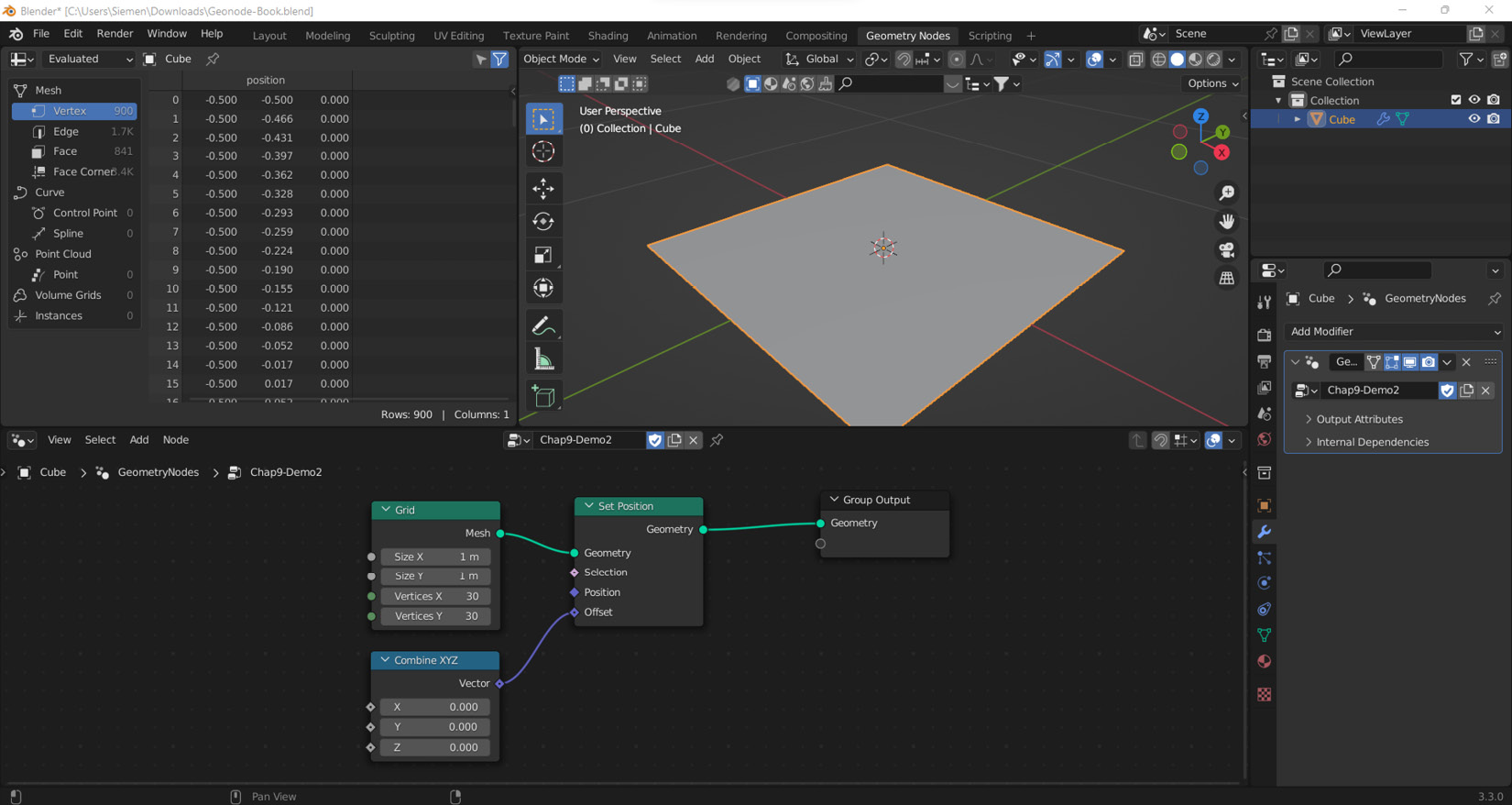Adding noise to your mesh
Let’s begin our journey into adding noise to mesh.
We will add a plane (Grid), and we’ll use a Set Position node to add displacement to our mesh using Noise Texture, just like we executed in the previous chapter. The difference now is that we’ll be performing it on a mesh instead of a Curve.
Demonstrating how to add noise to your mesh
Doing this is straightforward Let’s start by following these steps:
- Add a Grid node and give it enough resolution. Let’s give it a resolution of
50vertices on both the X and Y axes. - After the Grid node, let’s add a Set Position node to start modifying the grid.
- Before we start adding a Noise Texture node to the Offset input, we need to be able to convert the Offset input value to its separate X, Y, and Z values. This can be done using a Combine XYZ node.
This is how your current node tree should look:

Figure 9.13: Your current...
































































